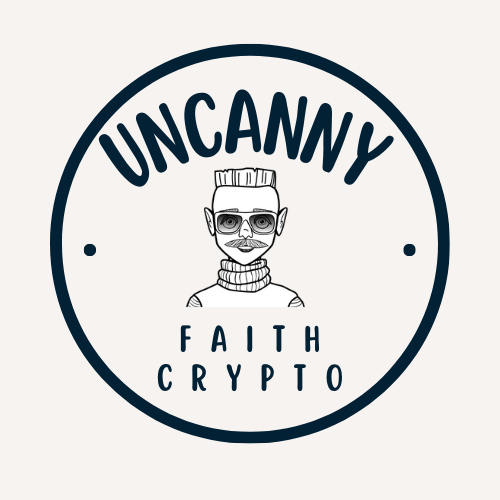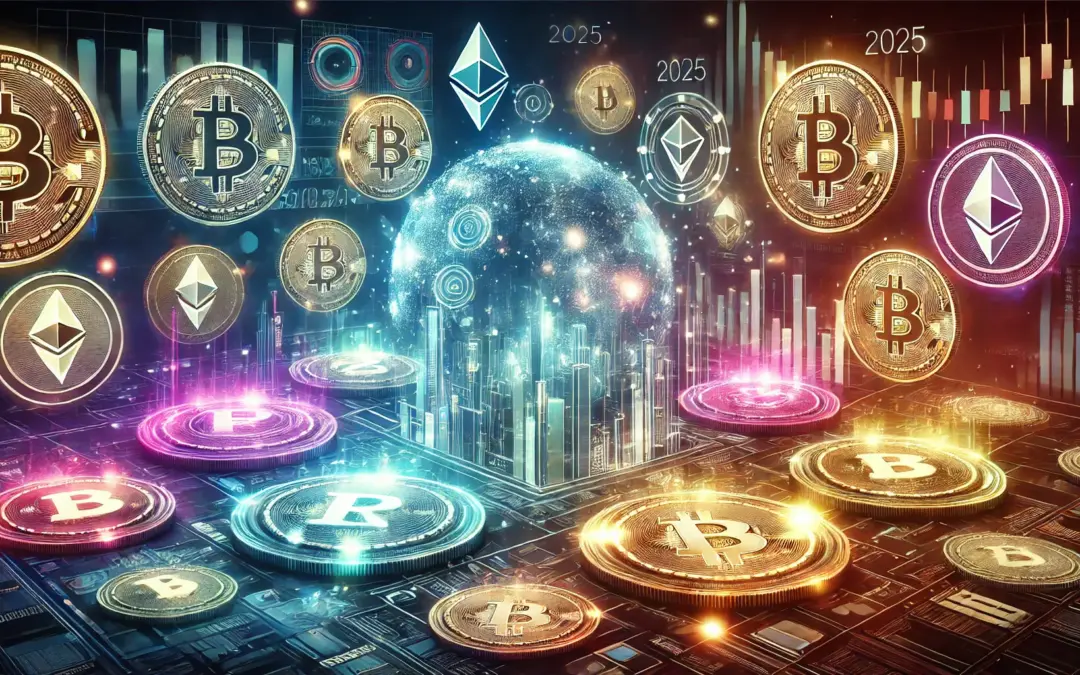As the cryptocurrency landscape evolves, specific projects continue to stand out for their unique vision and potential long-term value. Among them is Ravencoin (RVN), an open-source blockchain platform designed to excel in asset tokenization. With the growing interest in tokenized assets and decentralised finance, Ravencoin has carved a niche for itself in the crypto market. But what does the future hold for RVN, especially as we approach 2025?
In this in-depth forecast, we’ll explore key trends impacting the Ravencoin ecosystem, predictions for its growth, and how it could shape the blockchain world in the years to come. Whether you’re an investor, developer, or blockchain enthusiast, this article will provide valuable insights to help you understand RVN’s potential future.
What is Ravencoin (RVN)?
Before diving into predictions, let’s take a moment to recap what Ravencoin is all about. Launched in January 2018, Ravencoin is a blockchain network powered by a Proof-of-Work (PoW) algorithm. Unlike Bitcoin, its aim isn’t to serve as a global payment network or a store of value. Instead, Ravencoin is tailor-made for asset tokenization, allowing users to issue, manage, and transfer tokenized assets on the blockchain with relative ease. Think of it as a blockchain optimised for creating digital securities, tickets, real estate, and more.
Built on a Bitcoin fork, Ravencoin offers faster block times (one minute), better security through ASIC-resistance, and asset-specific features such as tags, metadata, dividends, and voting.
Why Should You Care About Ravencoin in 2025?
The crypto and blockchain industry is projected to grow significantly by 2025, with asset tokenization predicted to play a substantial role. Traditional industries such as real estate, art, gaming, and finance are increasingly adopting blockchain for its transparency, immutability, and efficiency. Ravencoin is uniquely positioned to benefit from these trends, particularly due to its ease of use and scalable tokenization infrastructure.
What’s more, Ravencoin’s commitment to a decentralised, censorship-resistant ecosystem aligns strongly with the ethos of blockchain technology. With global regulators cracking down on centralised giants, RVN’s decentralised approach could set it apart and increase its appeal by 2025.
Key Question:
"Will Ravencoin remain relevant or become overshadowed by competitors like Ethereum?"
While competitors such as Ethereum, Binance Smart Chain, and Solana have robust ecosystems, Ravencoin caters to a specific need: a simple, efficient way to tokenize and transfer assets without relying on complicated smart contracts. This focus on tokenization—without sacrificing decentralisation—may allow Ravencoin to sustain its uniqueness in the increasingly crowded blockchain landscape.
Trends to Watch for Ravencoin (RVN) in 2025
As we peer into the potential future of Ravencoin, several key trends give us clues about where the cryptocurrency is heading. These trends not only affect Ravencoin directly but also highlight broader shifts in the blockchain ecosystem.
1. Accelerated Adoption of Asset Tokenization
Asset tokenization is the process of converting real-world assets, such as property, art, or stocks, into digital tokens recorded on a blockchain. By 2025, tokenized assets are expected to surpass $16 trillion in value, according to estimates by global research firms. Ravencoin, with its singular focus on tokenization, could become a go-to platform for those looking to unlock the benefits of blockchain-backed assets.
- Use Case for Businesses: Small and medium enterprises (SMEs) could use RVN to create company shares or reward programs without the complexities of Ethereum’s smart contracts.
- The Rise of Tokenized Real Estate: Platforms tokenizing property are expected to soar, and RVN could serve as the underpinning blockchain for such innovations.
2. Increased Interest in Decentralised and Censorship-Resistant Protocols
Following regulatory scrutiny of centralised entities like Binance and Coinbase, there’s growing demand for decentralised platforms that prioritise privacy and user sovereignty. Ravencoin, lacking a central governing body and focused on user-led asset management, is well-suited to tap into this cultural shift. By 2025, we may see a dramatic uptick in demand for platforms like Ravencoin that maintain true-to-form decentralisation.
3. Sustainability of PoW Chains in a Post-Ethereum Merge Era
Ethereum’s transition to Proof-of-Stake (PoS) in 2022 highlighted energy efficiency concerns surrounding traditional Proof-of-Work protocols. Critics argue that PoW-based platforms like Ravencoin are lagging behind because of environmental costs. However, Ravencoin’s unique ASIC-resistant X16R algorithm makes mining accessible to individual users instead of industrial mining farms.
By 2025, Ravencoin’s ongoing efforts to refine energy-efficient mining could ease concerns, especially with the increasing use of renewable energy sources in blockchain operations. Could Ravencoin be a "green" PoW blockchain? This remains an important question to watch.
4. NFT Boom Meets Tokenization Simplicity
While NFTs gained popularity primarily for digital art and collectibles, a new generation of NFTs with real-world applications is emerging. Imagine digitising ownership of physical assets, like rare collectibles or instruments, that can be conveniently traded over a blockchain. RVN’s protocol simplifies NFT creation by enabling users to mint their unique tokens without complicated ecosystem requirements. By 2025, Ravencoin’s straightforward token creation process could make it a top contender in this market.
5. Regulatory Resilience
One of Ravencoin’s key strengths lies in its decentralisation and lack of centralised governance. It avoids regulatory bottlenecks that typically plague centralised cryptocurrencies and platforms. If regulatory crackdowns around 2025 intensify, Ravencoin may emerge as a legally resilient and censorship-resistant haven for users.
Ravencoin (RVN): Price Predictions for 2025
Of course, no discussion about a cryptocurrency would be complete without addressing its potential price performance. Let’s break this down based on various scenarios and market conditions.
Bullish Scenario
Should adoption for tokenized assets grow substantially—and blockchain-specific regulation encourage decentralised platforms—Ravencoin could experience significant price increases. Experts suggest that in an optimistic scenario, Ravencoin’s price might rise to $0.20 to $0.30 by 2025, fueled by institutional adoption and increased network utility.
Bearish Scenario
If the cryptocurrency market experiences continued price volatility or if regulatory bodies aim to target PoW networks, Ravencoin might struggle. RVN could hover between $0.02 and $0.05, reflecting reduced enthusiasm among investors and stagnant network activity.
How to Position Yourself as an RVN Investor or User in 2025
Looking to benefit from Ravencoin’s potential growth in 2025? Here are some actionable strategies:
- Diversify Your Portfolio: While Ravencoin has long-term potential, it’s crucial to balance your investments with other established digital assets.
- Learn About Asset Tokenization: Familiarise yourself with tokenization trends and innovate using Ravencoin’s features.
- Engage with the Community: Ravencoin has an active development and user community. Staying informed on updates will ensure you’re ahead of the curve.
Frequently Asked Questions
Q1: Is mining Ravencoin worth it in 2025?
A: Mining could still be profitable in 2025, especially with Ravencoin’s algorithm favouring individual miners over industrial-scale operations. Energy-efficient hardware and renewable energy sources will likely improve profitability.
Q2: Will Ravencoin face competition from Ethereum?
A: While Ethereum has broad applications, Ravencoin’s specialised focus on ease of tokenization makes it a strong competitor in this niche—with a significantly lower barrier to entry.
Q3: How can I create tokens on the Ravencoin blockchain?
A: Creating tokens on Ravencoin is straightforward and doesn’t require complex coding knowledge. Tools provided by the Ravencoin network allow users to issue tokens with custom names, quantities, and metadata.
Q4: What industries can benefit most from Ravencoin by 2025?
A: Industries like real estate, gaming, supply chain, and content creation can significantly benefit from blockchain-based tokenized assets.
Conclusion: Will Ravencoin Thrive in 2025?
Ravencoin’s potential for 2025 largely hinges on the adoption of asset tokenization and its ability to remain relevant in a competitive blockchain space. If the platform harnesses growing trends such as NFTs with real-world use or decentralised ecosystems, its vision of accessible, efficient tokenisation could become a cornerstone of blockchain’s utility.
For investors and blockchain enthusiasts willing to bet on the rise of tokenization, RVN may represent an appealing long-term prospect. Keep an eye on Ravencoin—it just might surprise you in the coming years!

